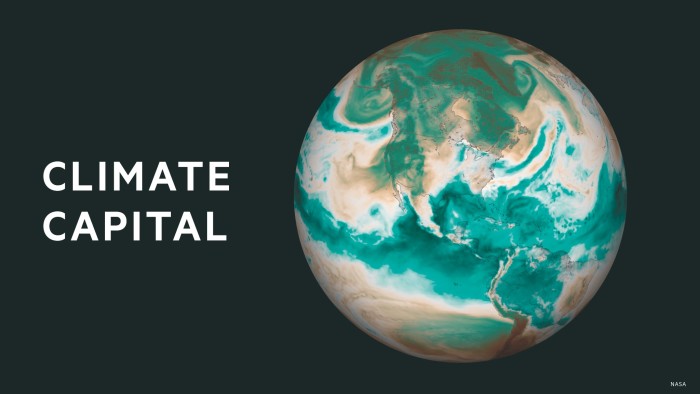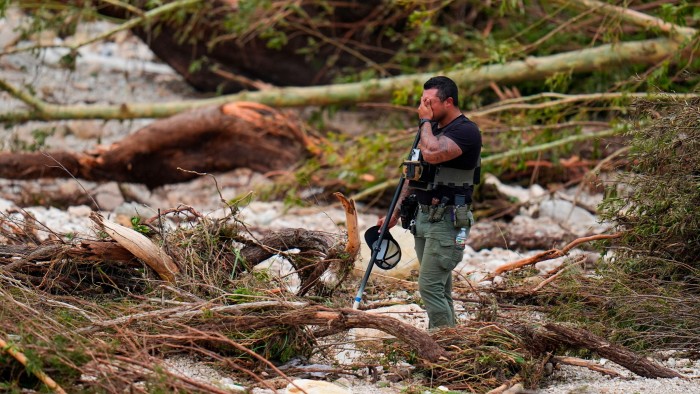A catastrophic flood that has killed more than 100 people in Texas has amplified concerns that countries are ill-prepared to warn citizens of impending dangers, even as climate change makes extreme weather events more frequent and intense.
Officials in the US face tough questions about why many people were not evacuated and whether sufficient warnings were given ahead of the Guadalupe River bursting its banks after intense rainfall in the early hours of Friday. About 170 people remain missing.
The flood, which took place over the US Independence Day weekend as tourists descended on the region, is the latest disaster in which critics have said lives were lost because of inadequate warnings.
Even in developed countries where communications and emergency services are readily available, a lack of sufficient warnings was cited as a significant factor behind deaths in Valencia, Spain, last year, where more than 200 people died in flash floods; Hawaii during wildfires in 2023, where more than 100 lives were lost; and Germany in 2021, where about 200 people were killed by floods.
“These types of disasters make me worried that our early warning systems are not prepared to deal with extreme weather,” said Erin Coughlan de Perez, an early warning specialist at Tufts University near Boston and a senior adviser at the Red Cross Red Crescent Climate Centre.
“It is particularly shocking and concerning that the [Texas] flood was so deadly in a place that knows they are at risk of flash floods.”
So-called early warning systems — used to alert people to an impending extreme weather event or disaster — are considered the first line of defence against climate change. The UN has set a target for the entire world to be covered by such systems by the end of 2027.
Such structures included weather forecasts, which were passed on to officials who must in turn communicate with the general public, said Ilan Kelman, professor of disasters and health at University College London.
Various channels can be used to transmit the warning to the population, such as sirens, mobile phone alerts or even more rudimentary options, such as individuals speaking from a fire engine or other vehicles.
In Kerr County, Texas, hard hit by the floods, officials criticised the forecasts and said they had no indication the rainfall would be so great. The National Weather Service warned of a risk of flooding in the area on Thursday, and issued its first flash flood warning for Kerr County in the early hours of Friday.
Hannah Cloke, a hydrologist at Reading university, said sufficient forecasts were available both in Texas and in other recent disasters, even though “heavy rainfall is really tricky to predict when and where it is going to fall exactly”.
“We have good forecasting systems. This is the really frustrating thing. With Texas, with Valencia, with the Germany floods . . . we had good indications there was going to be a serious problem . . . But those messages are not getting to people in time,” she said.

While the Texas flooding took place during the night in an area where mobile signal was patchy, she said a siren system, with an alert blasted from a speaker, could have helped save lives.
Almost a decade ago, officials in Kerr County discussed rolling out a siren warning system on the river, which had a long history of flooding, minutes from a 2016 meeting show.
Officials noted that “an audible system located at strategic points along the river” would help let tourists and others know to evacuate. Media reports suggest that was later rejected because of the costs.
Around the US, early warning systems were a “patchwork system and vary locally and regionally”, said Timon McPhearson, professor of environmental studies at New York University.
In New York, the city “can ping any phone”, a similar set-up to many European countries, while other areas of the US had “no systems at all”, he said.
“That’s the problem, and [is] why we need federal investment and commitments to help local vulnerable communities build systems that can decrease impacts.”
Only half of countries worldwide say they have the capability to alert citizens about impending hazardous weather, according to the UN’s Environment Programme.
Some areas have strong warning systems for one hazard, but not for others. Hawaii has a siren system for tsunamis, but struggled to warn people of wildfires in 2023.
The global picture has improved: 108 countries said they had an multi-hazard early warning system in 2024, more than double the figure reported in 2015, UN figures show.
But Coughlan de Perez said that with more intense extreme weather events expected, countries needed to make such systems a high priority for investment. That includes investing in science and weather forecasting, “communications to the public to make sure everyone receives the warning quickly”, and training for populations.
Japan, for example, runs frequent earthquake drills, as well as public campaigns on heat, flood and other risks.

Experts are concerned that authorities and the general public struggle to take seriously a forecast or warning about something they may not have seen before.
Repeated disasters have shown that officials are at times unwilling to call for evacuations or similar measures despite forecasts, according to Thomas Kjeldsen, who lectures at Bath university.
“You don’t want to be the agency who cried wolf too many times,” said Kjeldsen. “There is a trade-off between issuing lots of warnings and issuing enough warnings.”
To counter this, Coughlan de Perez has trained officials from governments and other organisations using extreme scenarios to force them to think about how the unexpected might play out and how they would react.
Cloke said people “cannot imagine what those really serious floods or fires or other disasters look like”, thinking these are “just the worst-case scenario”.
“But the worst-case scenario can actually happen. And in the case of the Texas floods it did happen . . . We need to prepare for those worst-case scenarios, because otherwise we are going to have more disasters where hundreds of people are dying.”
Climate Capital

Where climate change meets business, markets and politics. Explore the FT’s coverage here.
Are you curious about the FT’s environmental sustainability commitments? Find out more about our science-based targets here


